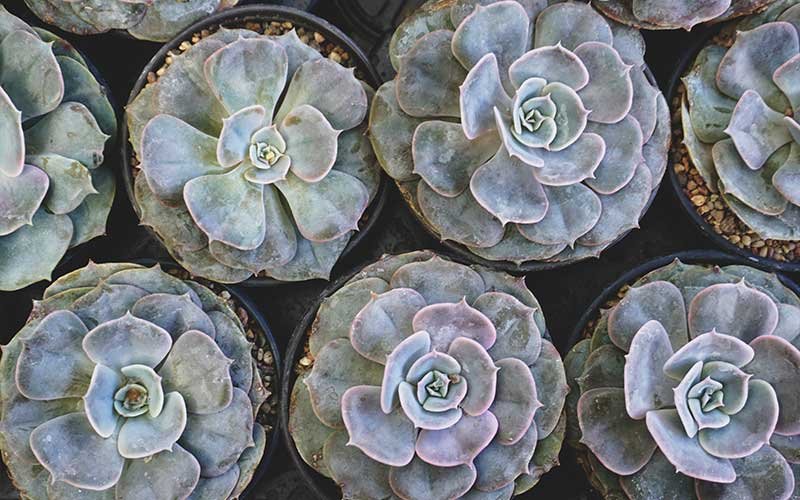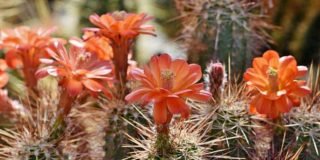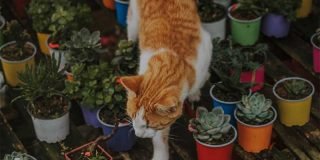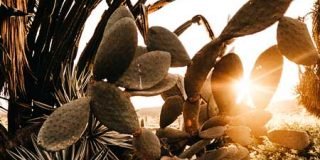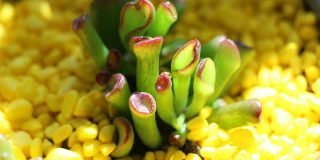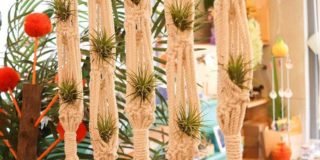Contents
Echeveria succulents are quite popular among gardeners and plant lovers alike because of its lovely foliage and it forms an eye-catching rosette. Echeveria Perle Von Nurnberg is one of the loveliest Echeveria species.
If this is your first time to hear about this species, we have good news for you! In this article, we will be discussing the guide on how to care for echeveria perle von nurnberg. If you want to know more information about this specific succulent, make sure to continue reading below!
What is Echeveria Perle Von Nurnberg?
Appearance
Echeveria succulents are some of the easiest succulents to grow and some of the best-looking ones. If you love flowers, Echeveria Perle von Nurnberg is the perfect succulent for you. It forms the most beautiful rosette with beautiful lilac and pearlescent hues. It can be a great addition to any rock garden or indoor succulent collection; you can also place it in a pathway to add a dramatic effect especially when the succulent is fully mature.
The Echeveria Perle von Nurnberg is commonly known as Pearl of Nurnberg. It has a gorgeous two-toned color, with pink highlights and white powdery appearance which adds to its frosted appearance.
Perle von Nurnberg is one of the best echeveria succulents. This succulent is easy to care for and can be easily propagated when exposed to full sunlight and given much-needed care. Individuals who live in areas with warm climates can plant this succulent outdoors and even add it to their garden landscapes.
Those who experience extremely cold winters can plant this succulent on a container. You can bring it outside during the summertime, but you have to make sure to take it inside when the cold weather comes around. Perle von Nurnberg is hardy in USDA zones 9, 10, and 11.
Size and Growth
The Perle von Nurnberg produces dense rosettes with rounded, fleshy, and pointy grayish lavender leaves with blush pink on its tips. If grown in ideal conditions, the Perle von Nurnberg can grow up to 3-5 inches in height and 6 inches in width.
The Perle von Nurnberg may produce one foot or 12 inches long reddish stems with spikes of gorgeous coral bell-like flowers. It is easy to propagate, just like the other succulents, it produces offsets that look exactly like its parent plant and can be easily transplanted into a container to create new succulents.
Flowers – Echeveria Perle von Nurnberg is one of the most popular succulents because it has a two-toned appearance. It can produce 5-6 flower spikes every year and blooms coral pink flowers with yellow interior during the summer months.

Ideal Growing Conditions
Light – Perle von Nurnberg succulents love the sun. It can tolerate partial sun to full sun exposure, but the more sun exposure, the better. This succulent needs at least 6 hours of sunlight daily to produce its best color. It can be grown indoors, you can place it in a sunny windowsill or you can use grow lights like this.
Temperature – This succulent is not frost hardy, ideal temperatures are above 40 degrees Fahrenheit, it is known to tolerate cold temperatures up to 25-30 degrees Fahrenheit.
Water – The Perle von Nurnberg is mildly drought tolerant and does not need frequent watering. During its growing phase, you have to water it frequently, but it needs to be decreased once the plant is well-established. For individuals living in areas with extremely hot climates or when growing it in a container, you need to water it regularly. You can use a watering can like this.
Allow the soil to dry out in between watering. You must use a well-draining container with drainage holes to allow water to drain thoroughly. Avoid overwatering as it can cause root rot and fungal diseases can occur.
Soil – The Perle von Nurnberg prefer loose, well-draining soil, you can use succulent/cactus soil mix. You can add pumice stones to the soil to improve its draining capacity. You can transfer plants every few years. You should clean and remove any rotting leaves or roots before repotting it with fresh potting mix. You must also check for pests and insects on the roots and you must get rid of them immediately.
Maintenance – The Perle von Nurnberg succulent do not require too much maintenance. Just make sure to remove dead leaves around the plant during its active growth phase, as it is the favorite hiding place of mealybugs. You can groom your succulent every 3-4 years by clipping it and repotting its small offsets in new containers to create new plants. To improve its appearance, you can remove dried leaves and old rosettes from time to time.
The Perle von Nurnberg plant can be added to xeriscapes and desert-themed garden landscapes. When growing it indoors, you must keep it dry during the wintertime because it experiences winter dormancy.

Gollum Jade Hardiness
The Gollum Jade is recommended for those living in the USDA Hardiness Zones 9-10. This means that those living in these zones can plant their Gollum Jade outdoors and leave it there year-round. It can tolerate mild frost and slightly freezing temperatures but not for long periods.
If you live in a place where the temperature significantly drops during fall and winter, we recommend that you plant your Gollum Jade in a container so you can take it indoors when there is a forecast of rain, snow, or frost. If you prefer to grow your Gollum Jade outdoors, there is also a way for you to protect your plant freezing temperatures. You can place it in a portable greenhouse to help it survive the winter months. You can purchase a portable greenhouse here.
How to Propagate the Perle von Nurnberg

Leaf cuttings can be used – Do not cut them off from the parent plant, gently pull the leaf away from the stem. This will help increase the chance of successful propagation. Allow the leaf to dry out and develop callus formation before planting it in the soil. Once the leaves have dried out, you can place it in well-draining soil and water it when the soil is completely dry. When the leave cuttings produce roots, you can start watering the baby succulent just like its parent plant.
Top part of the plant – You can do this by taking sharp garden shears and cut the top part of the plant. You can leave a few inches at the base, and the top part can be planted in fresh potting soil. You can water it just like the leaf cuttings. Allow the soil to dry before watering it again.
Pest and Diseases
Perle von Nurnberg is susceptible to mealybug infestation. You must inspect the plants regularly and make sure to remove the dead leaves at the base of the succulent; this is the common hiding place of mealybugs. Mealybugs and other pests suck the juices from the plant and it can weaken and kill the plant if not removed immediately.
You can use a cotton applicator and dip it in isopropyl alcohol and apply it in the infested areas. If you need help on how to treat mealybugs on your succulent, check out our website EdenSucculents.com for more information. Although it is a rare occurrence, you must also watch out for weevil and aphid infestation.
Do not overwater your Perle von Nurnberg succulent as too much water can cause root rot and makes it prone to fungal diseases. This plant is deer-resistant, so no need to worry when growing it in your garden.

What are the Common Uses for the Succulent Perle von Nurnberg?
Are you searching for any information or guide on how to care for the succulent echeveria perle von nurnberg? You came to the right place! Eden Succulents is one of the best online sources for all things about succulents.
We always aim to share our knowledge about succulents with our fellow plant lovers like you. Do you need any information on a specific succulent? Check out our website for more succulent-related information. Please let us know if you have any comments or questions, we’d love to hear from you!
Echeveria Perle Von Nurnberg Succulents
- Echeveria Perle Von Nurnberg Succulents in 4″ pot. Great for gifting!
- Echeveria Perle Von Nurnberg Succulents do well in your garden, on a patio, or in a sunny window. Comes in a 4″ green pot with our own premium succulent soil blend.
Indoor Watering Can
- Comfortable, Easy-to-Use Handle
- Long Stem Spout Controls Water Flow
- Made with Shatterproof, Recycled, and UV-Protected Plastic
Patches of Green VOLCANIC GARDEN PUMICE ROCK
Hoffman 10404 Organic Cactus and Succulent Soil Mix
- Organic cactus and succulent soil mix
- Professionally formulated for use with both jungle and desert cacti
- Provides the drainage cacti need to flourish; ready to use; pH balanced

